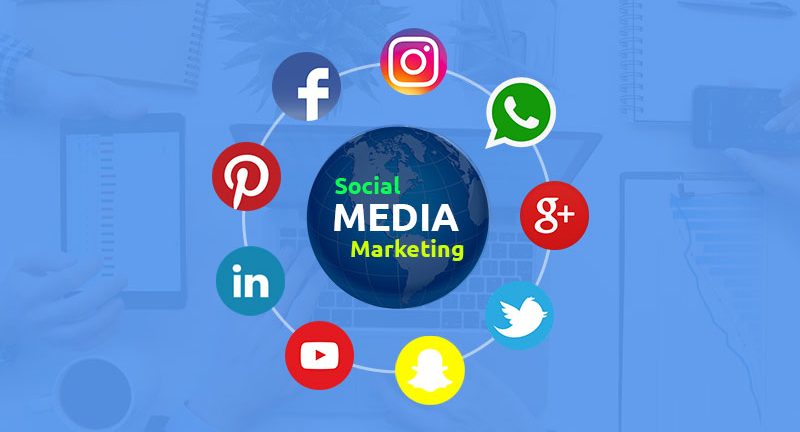The Role of Social Media in Modern Business: How Cafés Are Brewing Success
The role of social media in modern business has fundamentally transformed how companies connect with customers, build brand loyalty, and drive sales. Nowhere is this transformation more evident than in the café industry, where small businesses have mastered the art of turning lattes into lifestyle brands and coffee shops into community hubs through strategic social media presence. Gone are the days when a simple storefront sign and word-of-mouth recommendations were enough to sustain a local business. Today’s successful cafés understand that their survival depends not just on serving great coffee, but on creating shareable experiences that resonate across digital platforms. The Visual Revolution: Why Cafés Excel at Instagram Marketing Instagram marketing for cafés has become a masterclass in visual storytelling. Unlike traditional businesses that struggle to make their products photogenic, cafés naturally possess the aesthetic appeal that social media algorithms favor. The steam rising from a perfectly crafted cappuccino, the warm glow of Edison bulb lighting, and the carefully curated interior design all serve as content goldmines. Consider Blue Bottle Coffee, which transformed from a small Oakland roastery into a global brand largely through Instagram’s visual power. Their feed doesn’t just showcase coffee; it tells a story of craftsmanship, sustainability, and community. Each post reinforces their brand identity while encouraging customers to become part of their visual narrative. This visual appeal has led to the rise of what many consider the most instagrammable cafes around the world establishments that have mastered the art of creating spaces specifically designed for social media sharing. These cafés understand that their interior design, lighting, and even menu presentation serve as marketing tools that encourage organic content creation. The secret lies in understanding that modern consumers don’t just buy products, they buy experiences and identities. When a customer posts a photo of their morning latte, they’re not just sharing coffee; they’re communicating their taste, values, and lifestyle choices to their network. Community Building Through Social Media Engagement Strategies Successful cafés have discovered that social media engagement strategies extend far beyond posting pretty pictures. They’ve learned to foster genuine communities by: Responding authentically to customer interactions: Local favorite Stumptown Coffee engages with every customer comment, creating personal connections that transform casual visitors into brand advocates. Creating shareable moments: Many cafés design specific spaces with optimal lighting and backgrounds, essentially creating “photo studios” that encourage user-generated content. Leveraging local partnerships: Smart café owners collaborate with local artists, musicians, and influencers, expanding their reach while strengthening community ties. Hosting social media-friendly events: From latte art competitions to acoustic music nights, these events generate organic content while building lasting customer relationships. The Impact of Social Media on Small Businesses: Leveling the Playing Field The impact of social media on small businesses, particularly in the café industry, has been revolutionary. Platforms like Instagram and TikTok have democratized marketing, allowing independent coffee shops to compete with major chains without massive advertising budgets. Small cafés can now: Take Philz Coffee, which grew from a single San Francisco location to a multi-state chain primarily through social media buzz. Their personalized coffee blends and customer-focused approach resonated on social platforms, creating organic growth that traditional advertising couldn’t match. Digital Marketing for Local Businesses: The Café Blueprint Digital marketing for local businesses can learn valuable lessons from the café industry’s social media success. The most effective café marketing strategies include: Hyper-local targeting: Successful cafés use location-based hashtags and geo-tagging to attract nearby customers while building neighborhood identity. Seasonal content calendars: From pumpkin spice season to cold brew summer, cafés align their content with natural consumption patterns and seasonal trends. Behind-the-scenes storytelling: Customers connect with the human element showing baristas at work, explaining sourcing decisions, or sharing the owner’s journey creates emotional investment. Cross-platform consistency: The best café brands maintain a consistent voice and aesthetic across Instagram, Facebook, TikTok, and even LinkedIn for B2B partnerships. The Power of User-Generated Content in Marketing User-generated content in marketing represents perhaps the café industry’s greatest social media triumph. When customers willingly become content creators for your brand, you’ve achieved marketing nirvana. Successful cafés encourage user-generated content by: This strategy works because peer recommendations carry more weight than traditional advertising. When someone sees their friend enjoying coffee at a particular café, they’re more likely to visit than if they saw a paid advertisement. Measuring Success: Analytics That Matter Smart café owners track metrics beyond follower count: Challenges and Solutions in Social Media Marketing Even successful café social media strategies face obstacles: Content creation demands: Maintaining consistent, high-quality content requires significant time investment. Many cafés solve this by batch-creating content and using scheduling tools. Platform algorithm changes: Social media platforms frequently adjust their algorithms, affecting organic reach. Diversifying across multiple platforms and focusing on community building helps mitigate these impacts. Maintaining authenticity: As social media becomes more commercial, customers increasingly value genuine interactions over polished marketing messages. Future Trends: What’s Next for Café Social Media The café industry continues to innovate in social media marketing: Lessons for Other Industries The café industry’s social media mastery offers valuable insights for businesses across sectors: Visual consistency matters: Whether you’re selling software or shoes, maintaining a cohesive visual brand across platforms builds recognition and trust. Community over followers: Engaged communities of 1,000 loyal customers often generate more revenue than 10,000 passive followers. Authenticity resonates: Customers connect with genuine stories and real people behind brands, not just polished marketing messages. Local relevance: Even global brands benefit from local community engagement and neighborhood-specific content. Conclusion The role of social media in modern business extends far beyond simple promotion it’s about building communities, creating experiences, and fostering genuine connections between brands and customers. The café industry has provided a blueprint for success, demonstrating how small businesses can leverage social media to compete with larger competitors, build loyal customer bases, and create sustainable growth. As we’ve seen through countless café success stories, the most effective social media strategies combine visual appeal with authentic community engagement, local relevance with global reach, and consistent branding with genuine human connection. These principles apply whether you’re serving coffee, software, or any product or service in today’s digital marketplace. For businesses looking to enhance their






